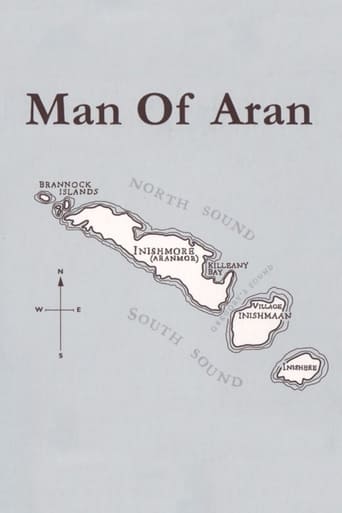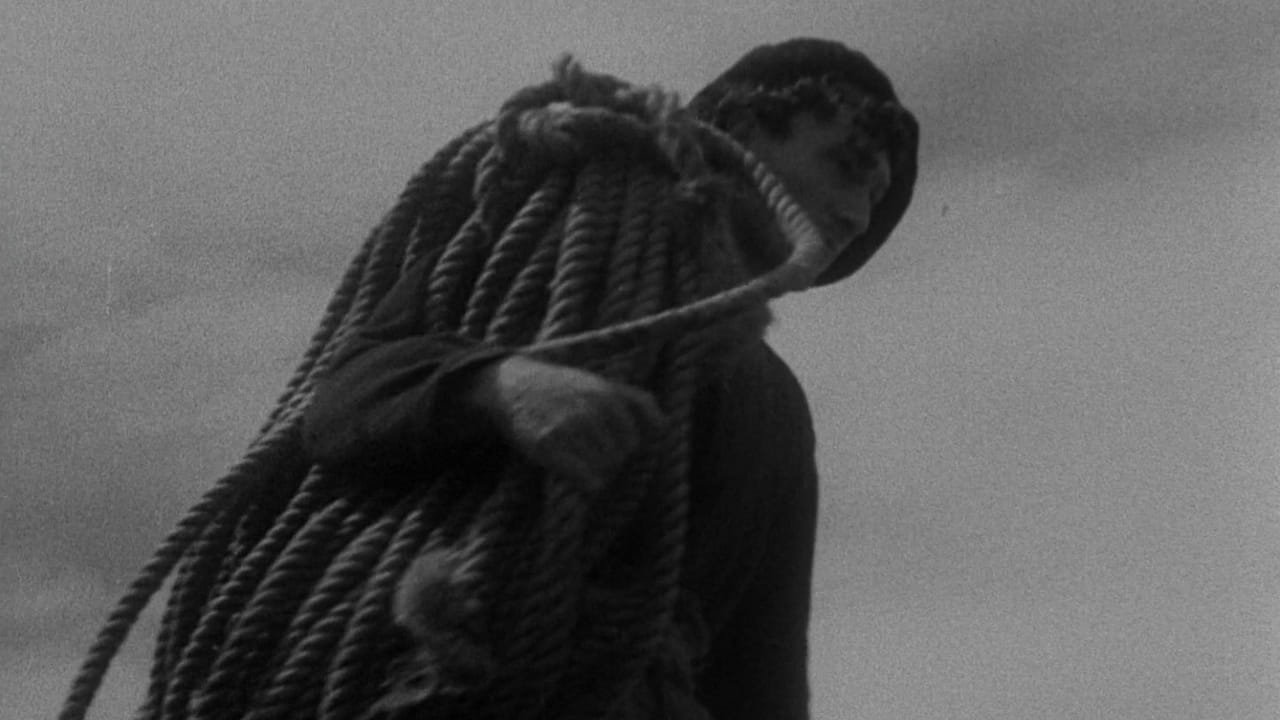Igenlode Wordsmith
I'm afraid this is one of the cases when I went to a good deal of physical effort, not to mention discomfort, to get to see a film, and then had my expectations severely dashed. What I find hard to grasp about this film is just how anyone could take such dramatic footage and create such a sadly tedious result out of it...In many ways this is a silent film, but as a silent it is ill-served by its (too sparse) intertitles and its (apparently especially composed) music, which is used in talkie-fashion as a bland wash of sound behind the images, rather than responding in any way to what is on screen. The visuals ought to be full of tension, and I felt that the homogeneous deployment of the music actually undermined what tension was there.Which was not much. The impression I got was that the director was trying to put in *every* frame that he had shot on location, with the result that everything happens with extreme longueurs. Unfortunately very little of what we are seeing is explained, which doesn't help. Eventually it is usually possible to work out what is happening, but the approach is neither conducive to the interest of a documentary nor to the coherence of a narrative film.Considered as a talkie, on the other hand, the film makes poor use of dialogue -- which is, in practice, largely incomprehensible, and unhelpful when the characters' words can be made out (it's clear why intertitles were felt to be necessary). I wasn't clear whether the characters are in fact speaking Gaelic most of the time, as I had originally assumed, or whether the recording quality is just so poor as to make it hard to understand their accented English.So far as narrative goes, practically nothing actually seems to happen. I'm afraid I actually fell asleep in the middle of the film (at some point after the interminable shots of the curragh hooking a basking shark in real-time were followed, alas, by an intertitle stating that the action was going to continue for a further two days..!), but worryingly didn't appear to have missed anything when I woke: the woman and boy were still gazing out from the cliffs, the boat was still out on the waves, and the only thing that had changed was the weather. Basically, the curragh arrives at the start of the film, there are some shots of soil gathering and starting the cultivation of a new field (this was the most interesting and 'documentary' section of the whole picture, where we were actually given enough information to learn something!), and then the curragh and its crew set out again after a (quite harmless) basking shark, which is almost as large as the boat. A storm. The boat is smashed after the crew abandon it on the stony beach -- I'm afraid I chiefly hoped the film-makers paid for the loss -- The End.The rest is all endlessly arty shots of the waves smashing against the cliffs on Aran. Very little shown of the everyday life of the inhabitants; no explanation of the fascinating history and unique handling qualities of the curraghs (the last descendants, as it happens, of the Irish leather-skinned craft of the Middle Ages); not enough human interest to arouse more than an abstract concern over the fate of the little family. The footage is spectacular, and oh! what a film the BBC documentary section might have made out of it -- what an incestuous thriller the silent-era Hitchcock might have concocted around that scenery and those lives...Flaherty contrives the astonishing feat of making it both remarkably boring and oddly uninformative.
forgottennmantra
This is a magnificent portrait not only of a dying way of life (dying in 1934 and still dying) but a portrait of the human struggle to find life in the most desolate of places. The photography is magnificent, the pacing is perfect and the piece transcends culture and even the very idea of "documentary" film. But this is true of all of Flaherty's films. Flaherty wasn't a documentarian. He didn't purport to be a disinterested observer (whatever that is). He staged his films, this has never been in dispute and he never made any attempts to hide the fact. He referred to films he made as "travel films", a phrase common in the 1930s. Make no mistake this film is a piece of art.
chris miller
both allmovie.com and imdb.com call this a documentary, but that's a bit iffy. it's real footage of real people, but the action is sorta directed and the people aren't portrayed as they are in real life - the three main characters are supposed to be related, but aren't really. it's more of a documentary than "kids," which is a feature film that is shot like a documentary and most of the actors weren't doing much acting - rather they were sort of just playing themselves. maybe it's a documentary like koyaanisqatsi (or man with a movie camera) is a documentary - things are distorted or shaped by the director, but it's still real life; tough to say. enough of that though, on to the review. the photography is much better in this film than it was in flaherty's first (nanook of the north, which i also own). the black and white images are much sharper and the cinematography is far more advanced. nanook of the north was sort of an accident film for flaherty - he was in northern canada on some sort of expedition and sort of fell into being a filmmaker. at any rate, this film is a definite step up (in a technical sense) from nanook of the north. he uses montage, at least a couple different cameras, and has gotten even better at editing, making this film truly good - especially for its time (1934). i mentioned a few reviews ago that 'triumph of the will' was hardly impressing, even when taking into account the year of release. here's a film that proves my point - it was released in the same year, it's also a documentary (mostly), and it's probably ten to eleven times better than 'triumph of the will.' B+.
semerald10
As a child, I saw Man of Aran in my grandfather's living room. I didn;t understand why he seemed so moved by the Man of Aran. I recently learned that Colman King (the star) was my grandfather's first cousin. Delia King Donahue was my great grandmother, and her nephew was Colman King. As far as the film goes, it is what it is, the life and times of those trying to eek out a living under very adverse circumstances.Does anyone know where I might obtain a poster(reproduction) of the movie? Yah, nostalgia)Thanks, Sue


 AD
AD


